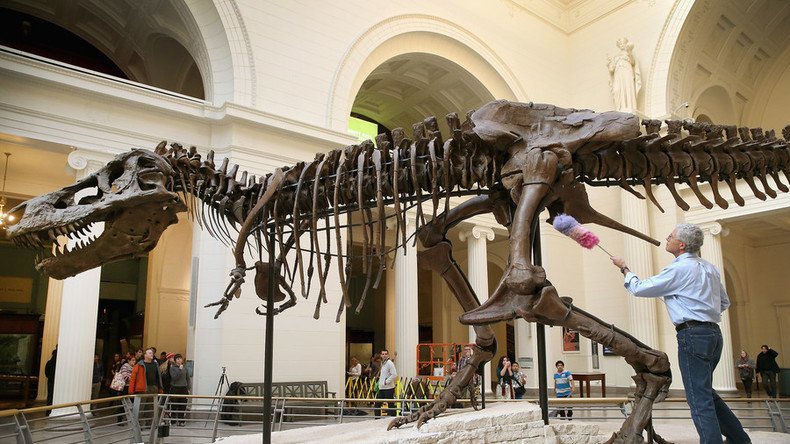Vicious weapon or sex aid: Has mystery of tiny T-rex arms been solved?

The Tyrannosaurus rex, a terrifying predator with mysteriously tiny arms, may have used the disproportionately-sized limbs as deadly weapons to slash prey, according to new research.
The small arms of one of the largest dinosaurs to roam the Earth have long-confounded scientists, and made the otherwise-fearsome carnivore the butt of dinosaur jokes.
New research, however, suggests that appearances are misleading, and claims the insignificant-looking arms were in fact used to tear prey to shreds.
Paleontologist Steven Stanley from the University of Hawaii at Manoa says that the T-rex likely slashed its cornered prey using its arms. Stanley presented his paper on the subject at the Geological Society of America this week.
READ MORE: ‘Breakthrough’ discovery inside Giza Pyramid baffles scientists
“Its short, strong forelimbs and large claws would have permitted T. rex, whether mounted on a victim’s back or grasping it with its jaws, to inflict four gashes a meter or more long and several centimeters deep within a few seconds – and it could have repeated this multiple times in rapid succession,” Stanley said.
He backed up the claim pointing to the widespread slashing carried out among other theropod taxa – dinosaurs characterized by their three-toed limbs.
Stanley noted that six of the limb’s derived traits indicate that the arms were adapted for slashing at close quarters. These attributes included the arms’ short length, the robustness of the bones and the huge (8-10cm-long) sickle-shaped claws that could inflict deep wounds.
Other experts, however, have yet to be convinced of Stanley’s theory. “It seems illogical to me to use such small arms to slash with,” Jakob Vinther, a paleobiologist from the University of Bristol in the UK who attended the presentation told National Geographic.
Vinther believes the arms were used for a “minor subsidiary purpose,” such as to clasp a partner during sex.
Thomas Holtz, a tyrannosaur expert at the University of Maryland in College Park said it’s more likely the arms were actually more functional in young T. rex, and this became reduced as they got older.
“The strike zone would be proportionately larger in a young T. rex – and going after smaller prey would mean the force required to kill the victim would be less,” he said.












